AWS GenAI 101 by DoiT
The AWS GenAI Day, organized by my employer, DoiT, was a comprehensive event designed to delve into the current state and future of Generative AI (GenAI) and showcase how businesses can harness this technology using AWS services. Here's a summary of the key takeaways and insights from the event.
A huge kudos to my team lead, Ángel Ramos (Staff Cloud Architect, DoiT), with whom I co-presented the session.
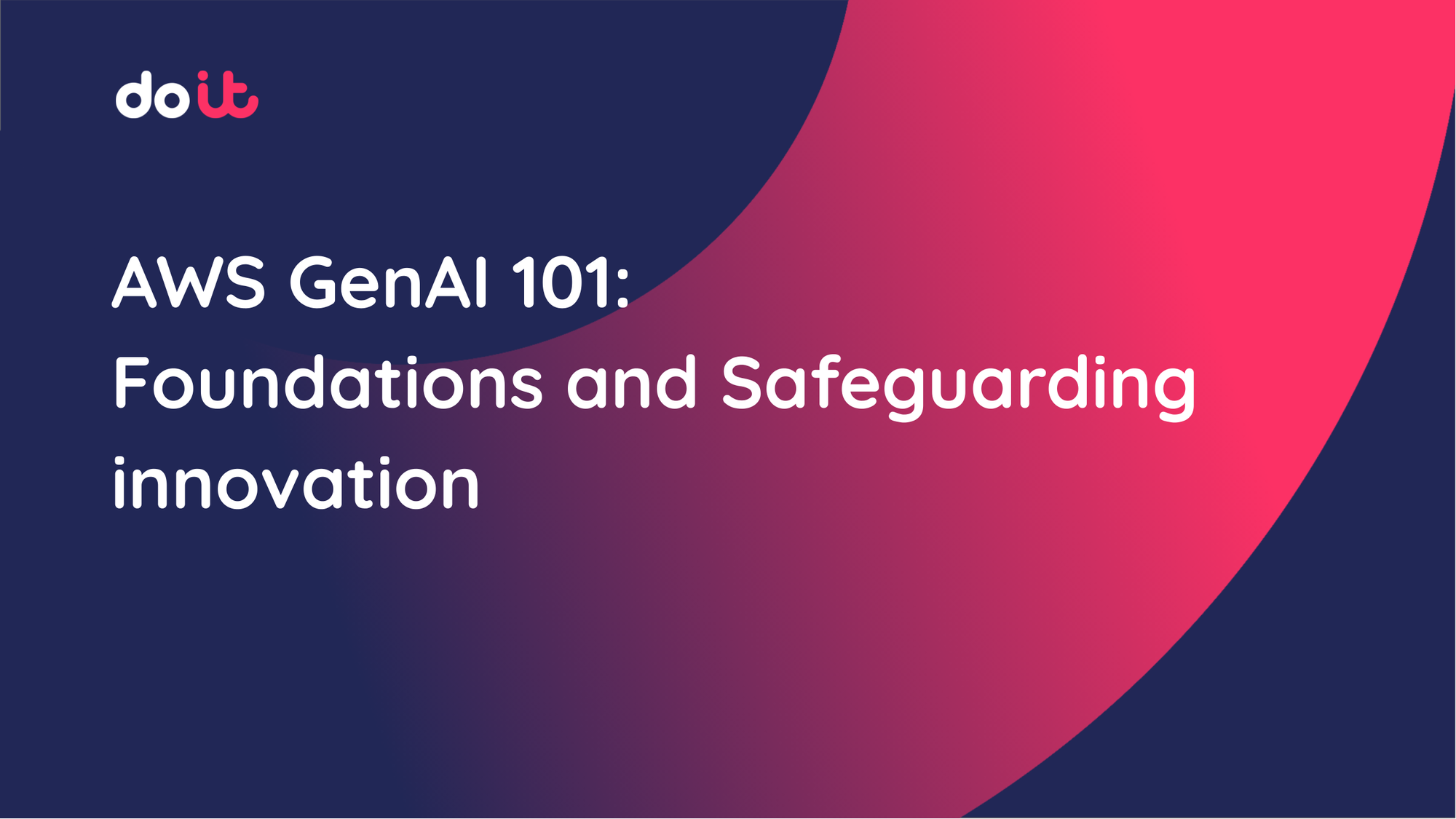
Understanding Predictive AI vs. Generative AI
Predictive AI and Generative AI differ fundamentally in their approaches and applications. Predictive AI makes forecasts based on historical data that are valid for specific tasks with labeled input-output pairs. In contrast, Generative AI uses unsupervised training to handle multiple tasks, generating new data from vast, unlabelled datasets.
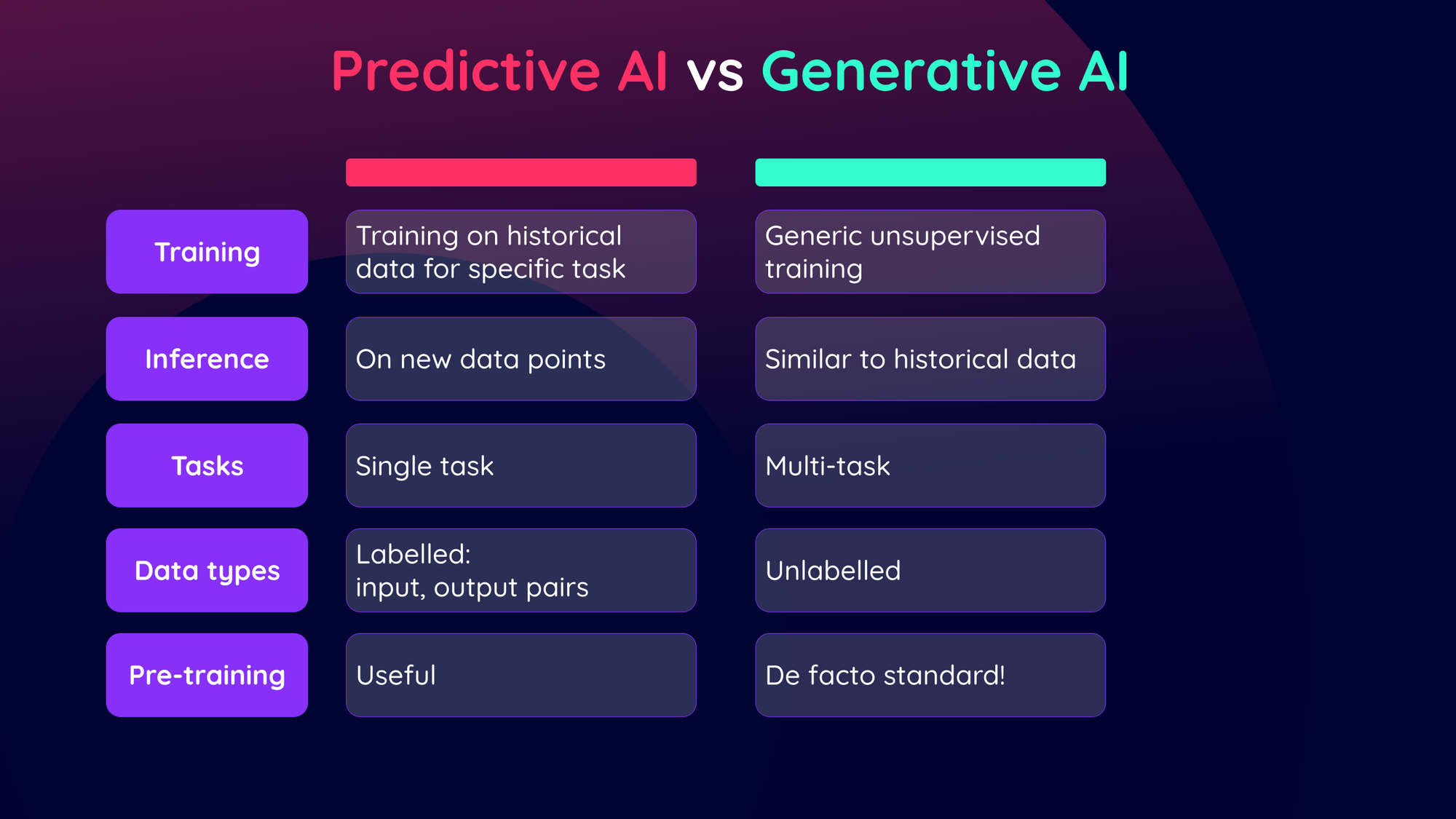
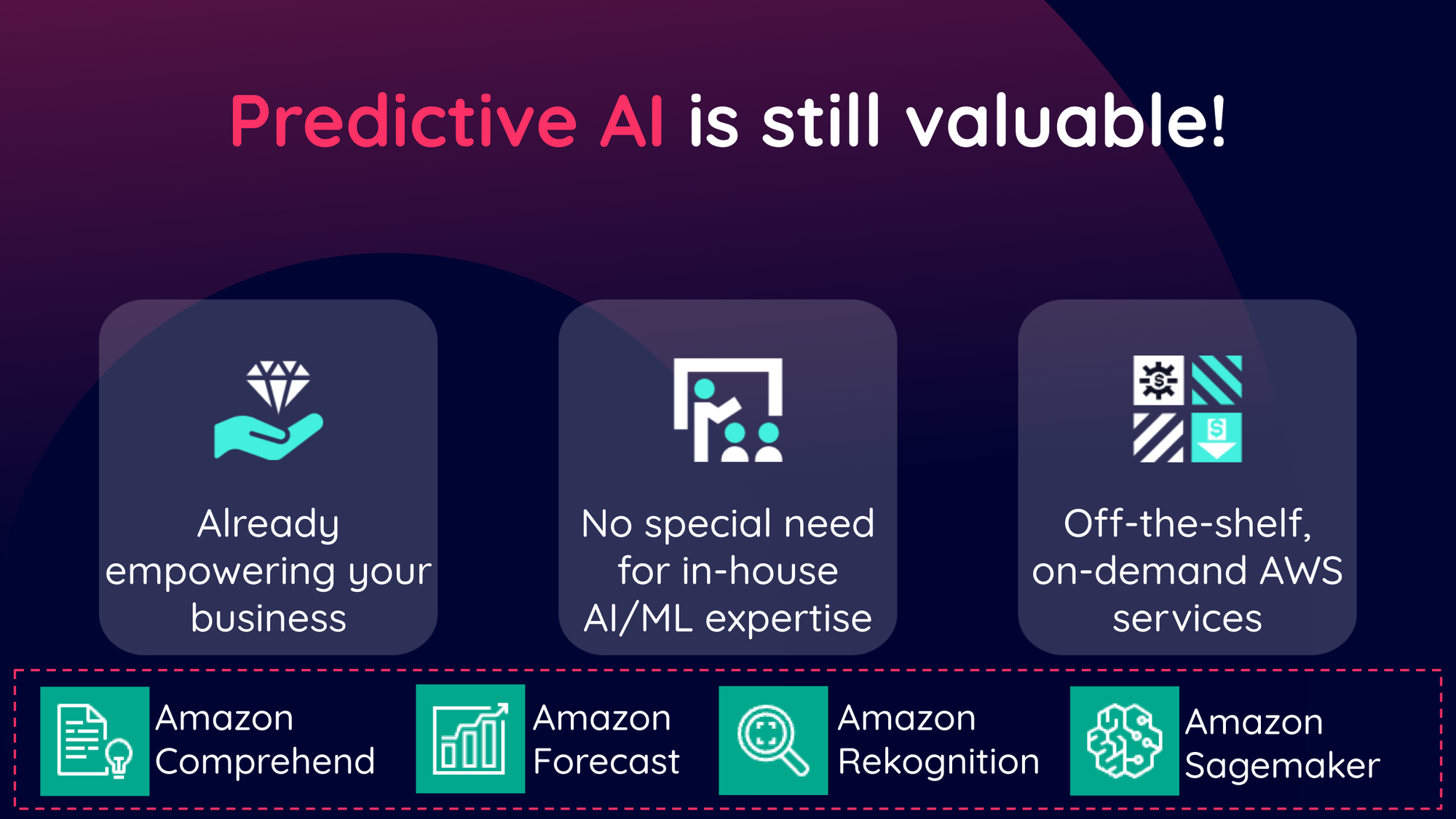
Critical Benefits of Generative AI
A survey from Deloitte highlighted several benefits organizations hope to achieve with GenAI:
- Improving efficiency and productivity (56%)
- Reducing costs (35%)
- Enhancing products and services (29%)
- Encouraging innovation and growth (29%)
- Increasing development speed and ease (26%)
- Shifting workers to higher-value tasks (26%)
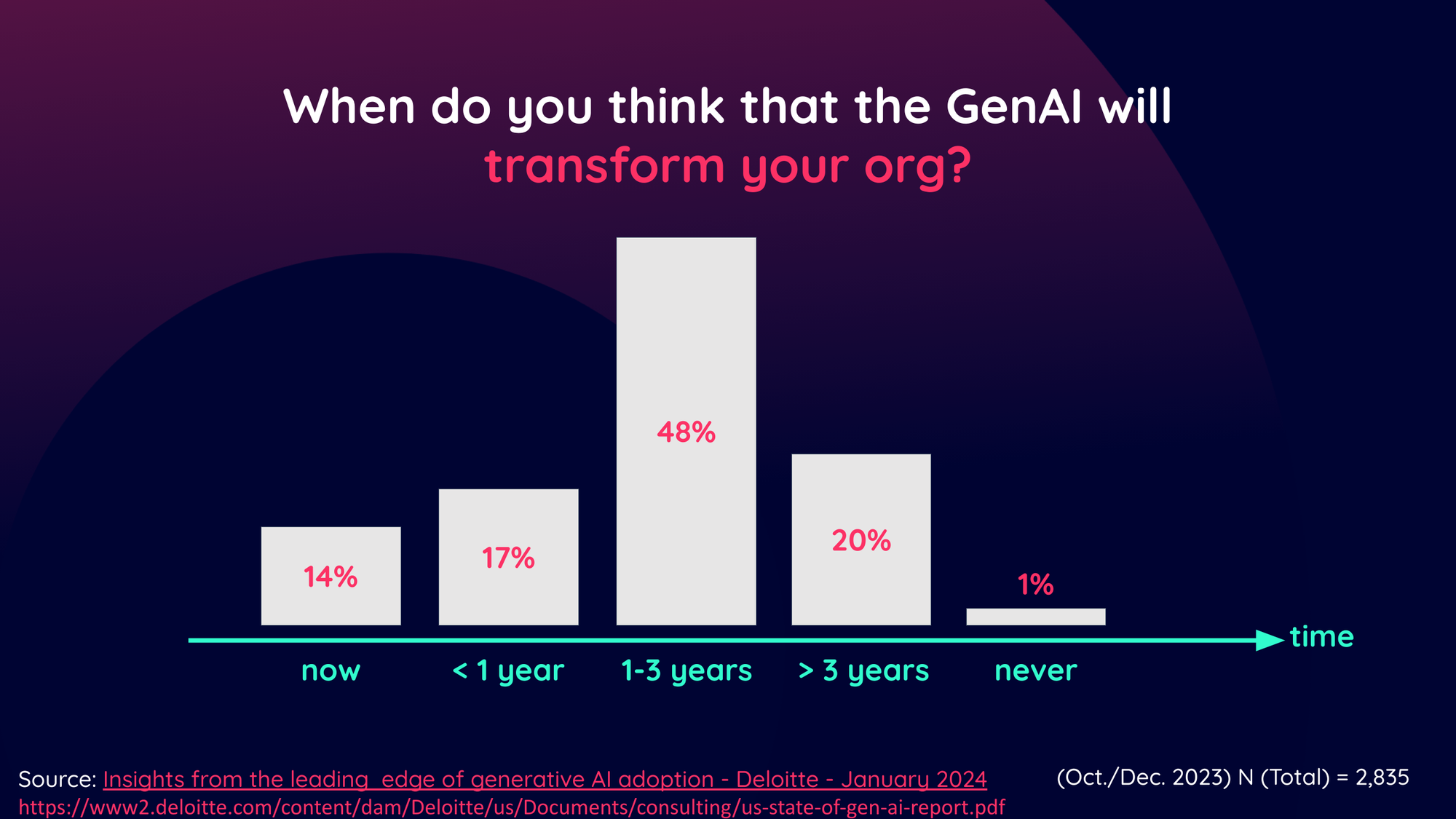
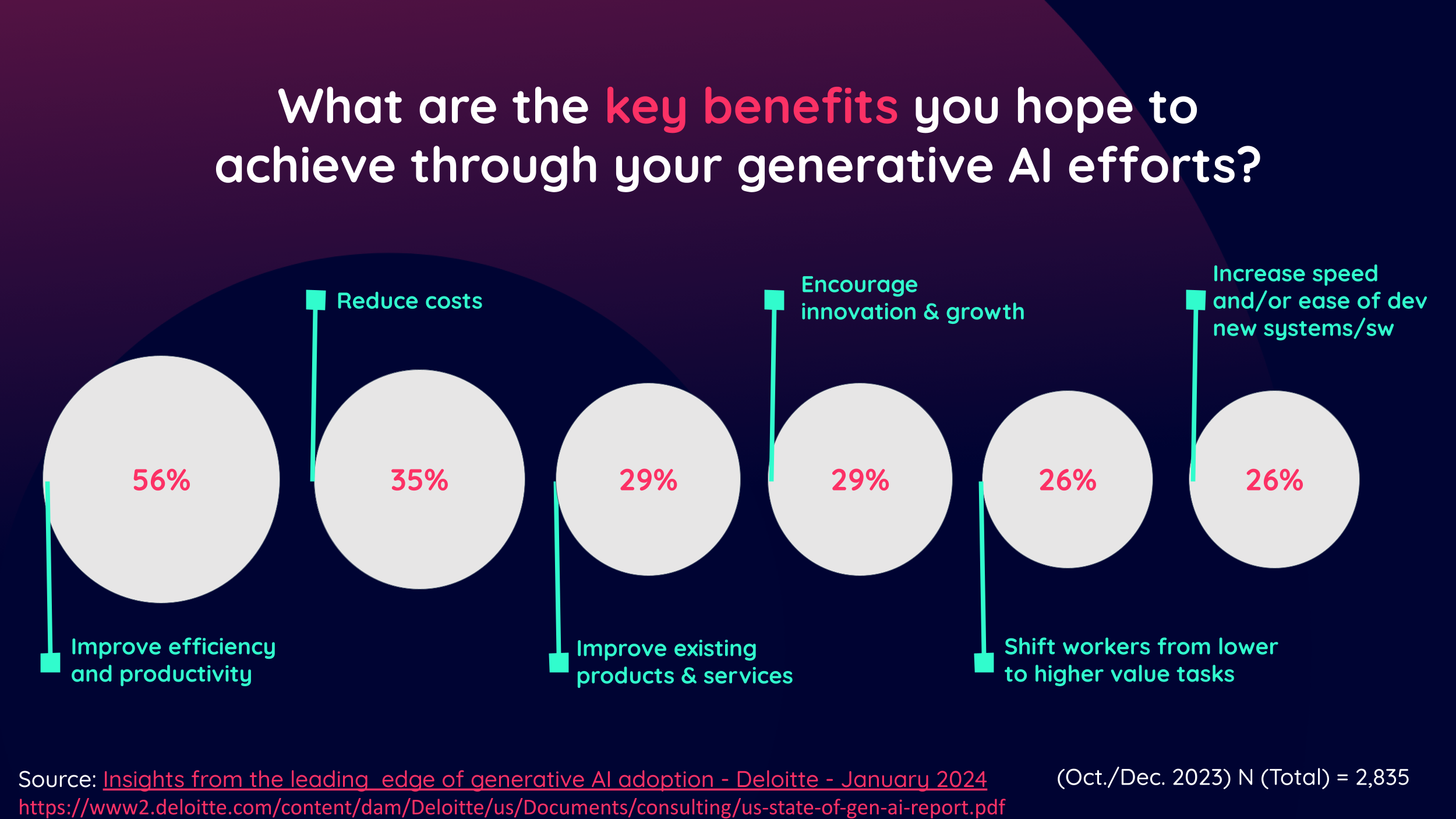
Readiness for Generative AI Adoption
Despite the enthusiasm, organizations face challenges in technology infrastructure, strategy, risk governance, and talent acquisition. Notably, 68% of employees use GenAI without informing their supervisors, indicating a formal adoption and governance gap.
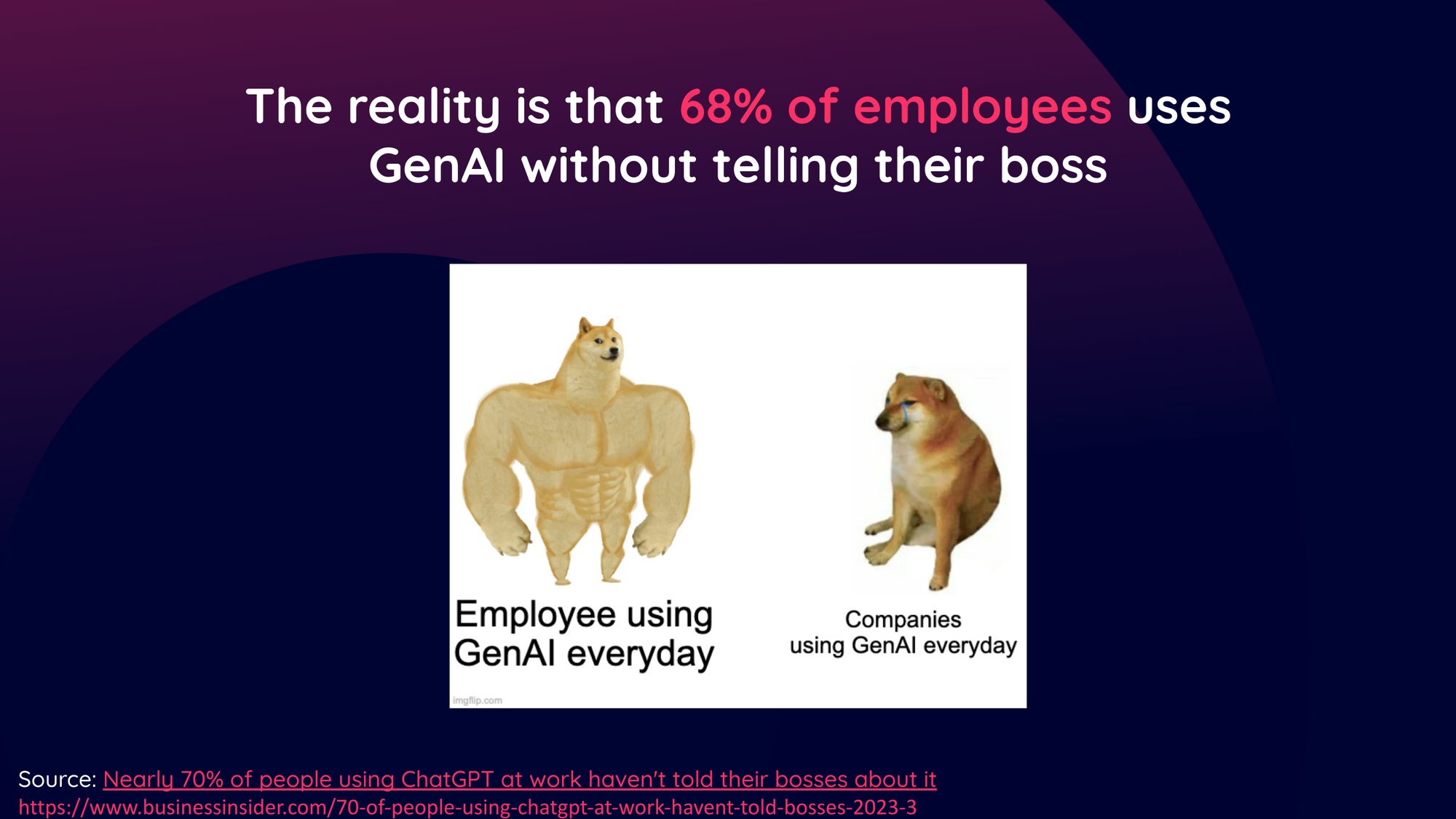
The AWS AI Stack
AWS provides a flexible, scalable, and comprehensive AI stack, enabling businesses to tailor AI solutions to their needs while ensuring security and compliance. GenAI is one of the multiple options available.
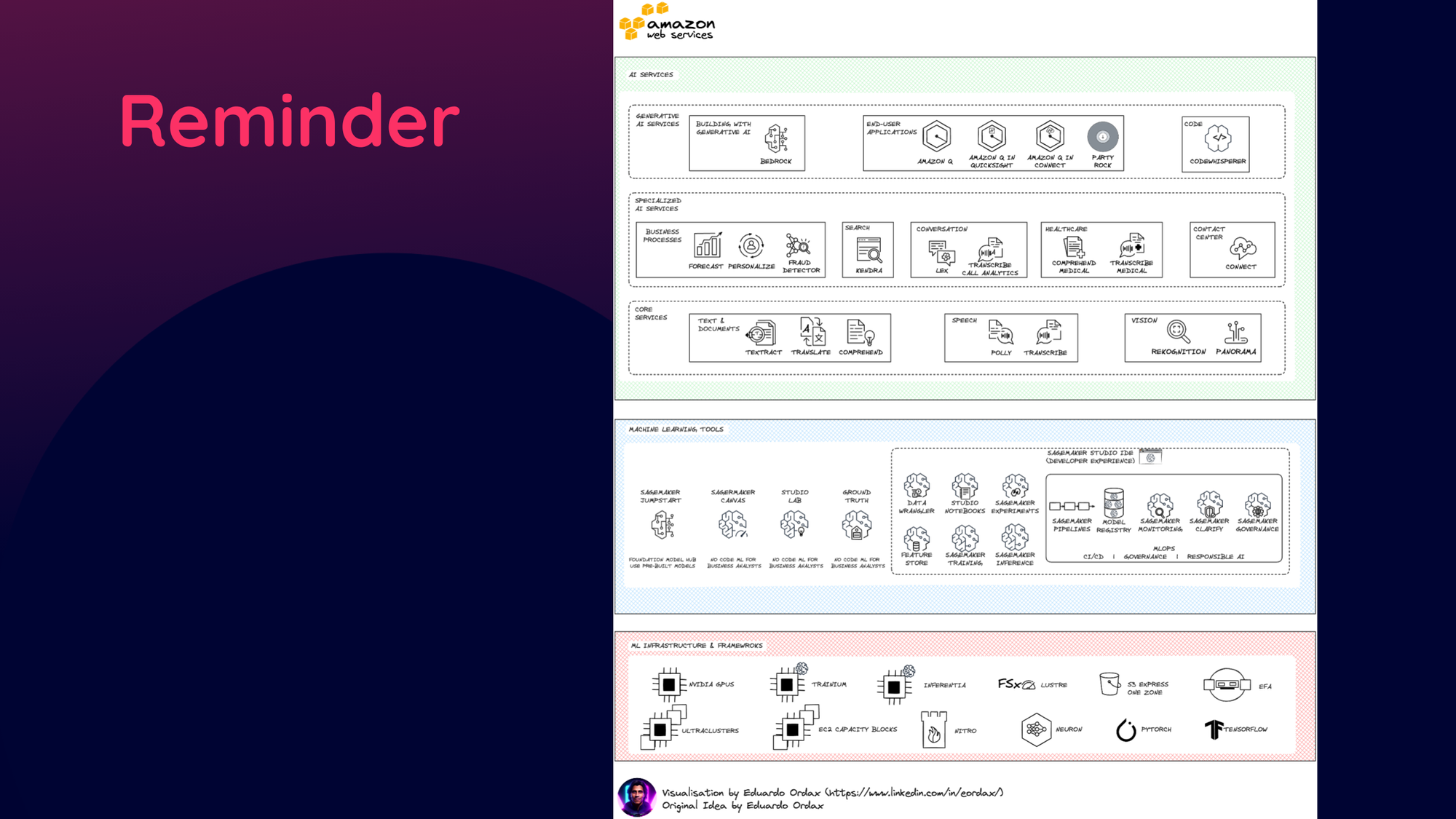
Amazon's GenAI Stack and Services
In particular, Amazon offers a robust GenAI stack to support various applications:
- Infrastructure: GPUs, Trainium, Inferentia
- Building Tools: SageMaker, Bedrock
- Applications: Amazon Q for natural language interfaces, OpenSearch, Kendra
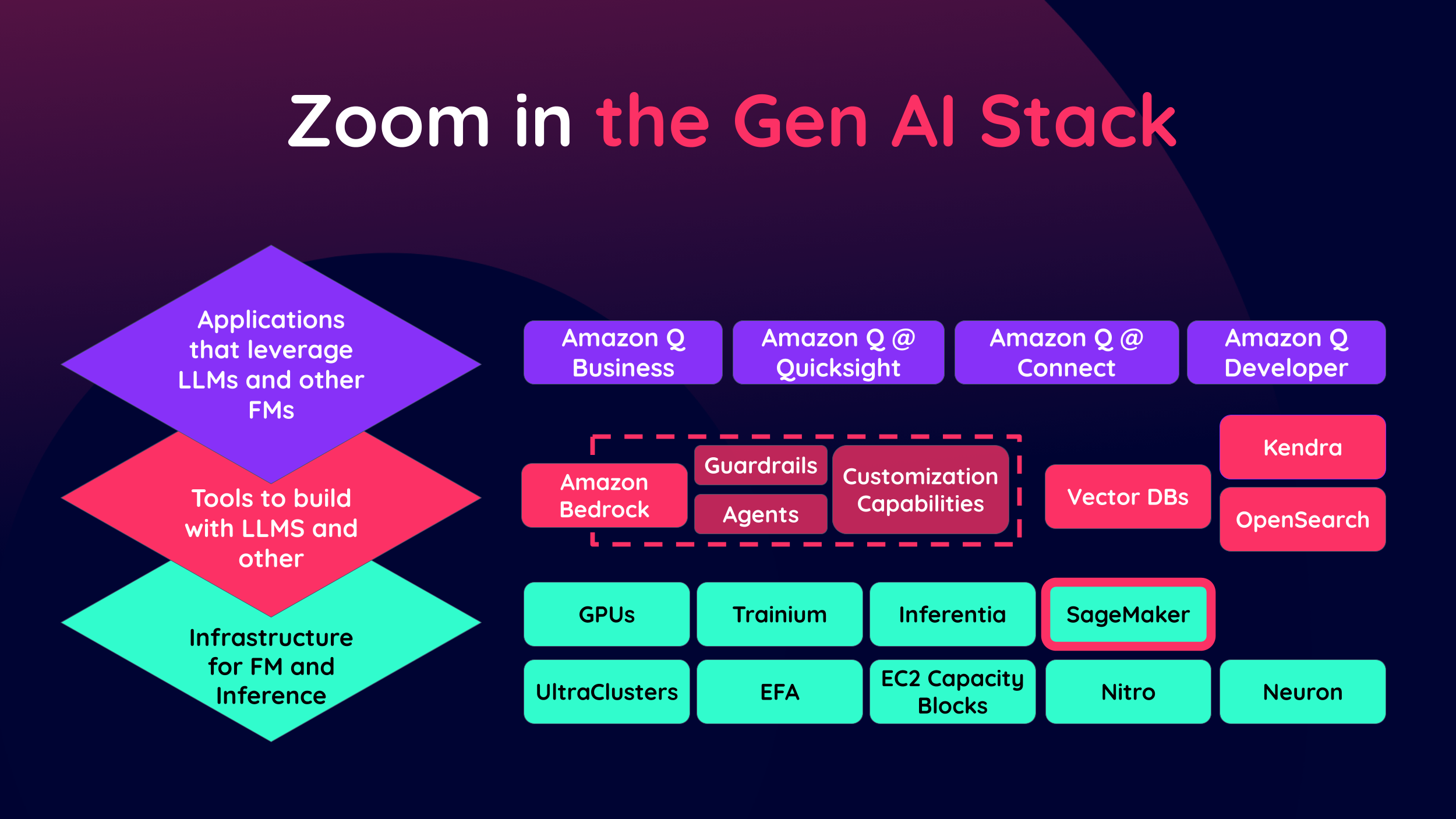
Amazon Q is a standout service. It provides customizable, conversational AI interfaces integrated with daily workflows, ensuring contextual and adaptive responses.
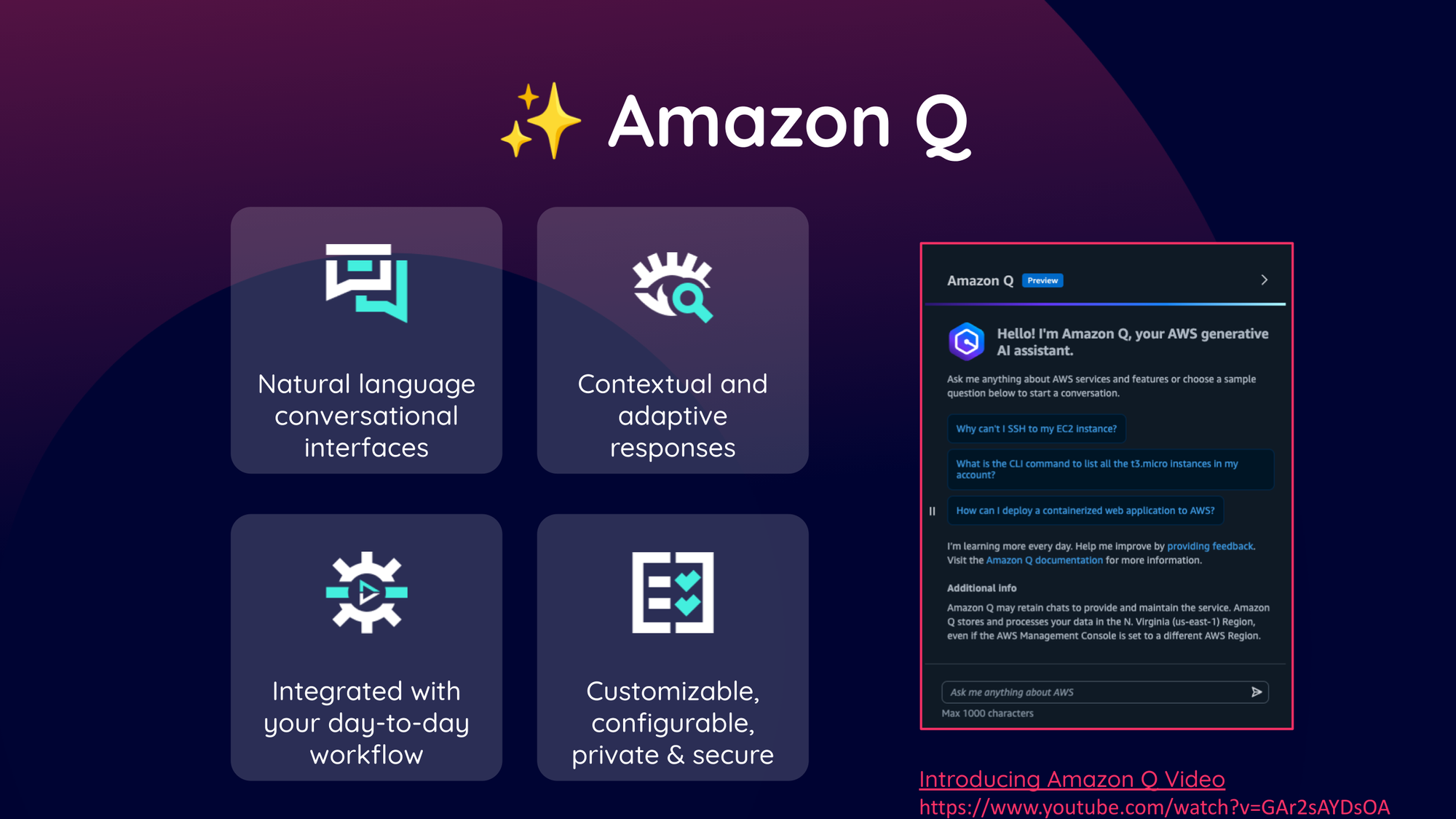
Amazon Bedrock
Amazon Bedrock helps you rapidly adapt and take advantage of the latest generative AI innovations with easy access to high-performing FMs from leading AI companies like AI21 Labs, Anthropic, Cohere, Meta, Mistral AI, Stability AI, and Amazon. The single-API access of Amazon Bedrock, regardless of the models you choose, gives you the flexibility to use different FMs and upgrade to the latest model versions with minimal code changes.
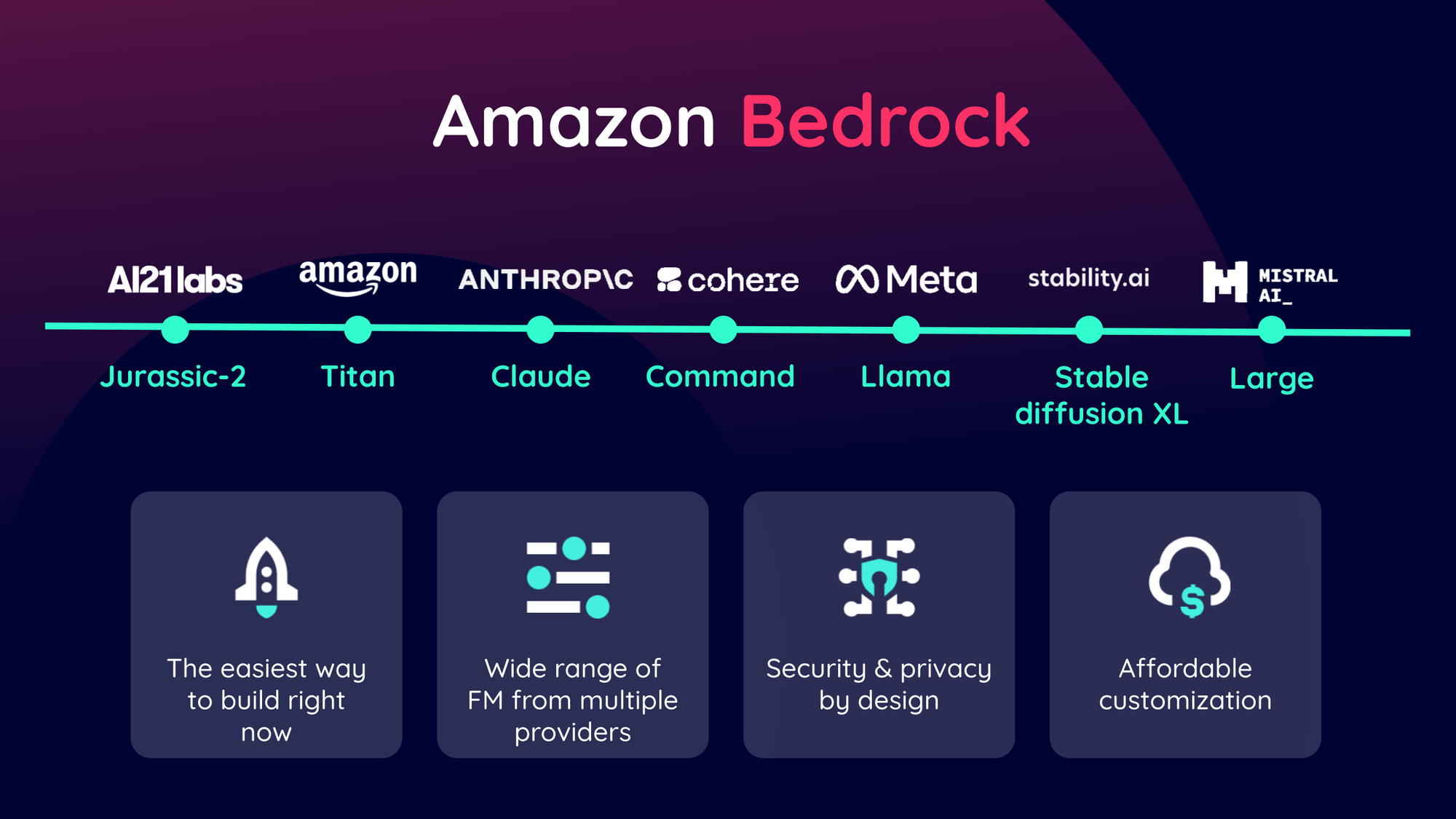
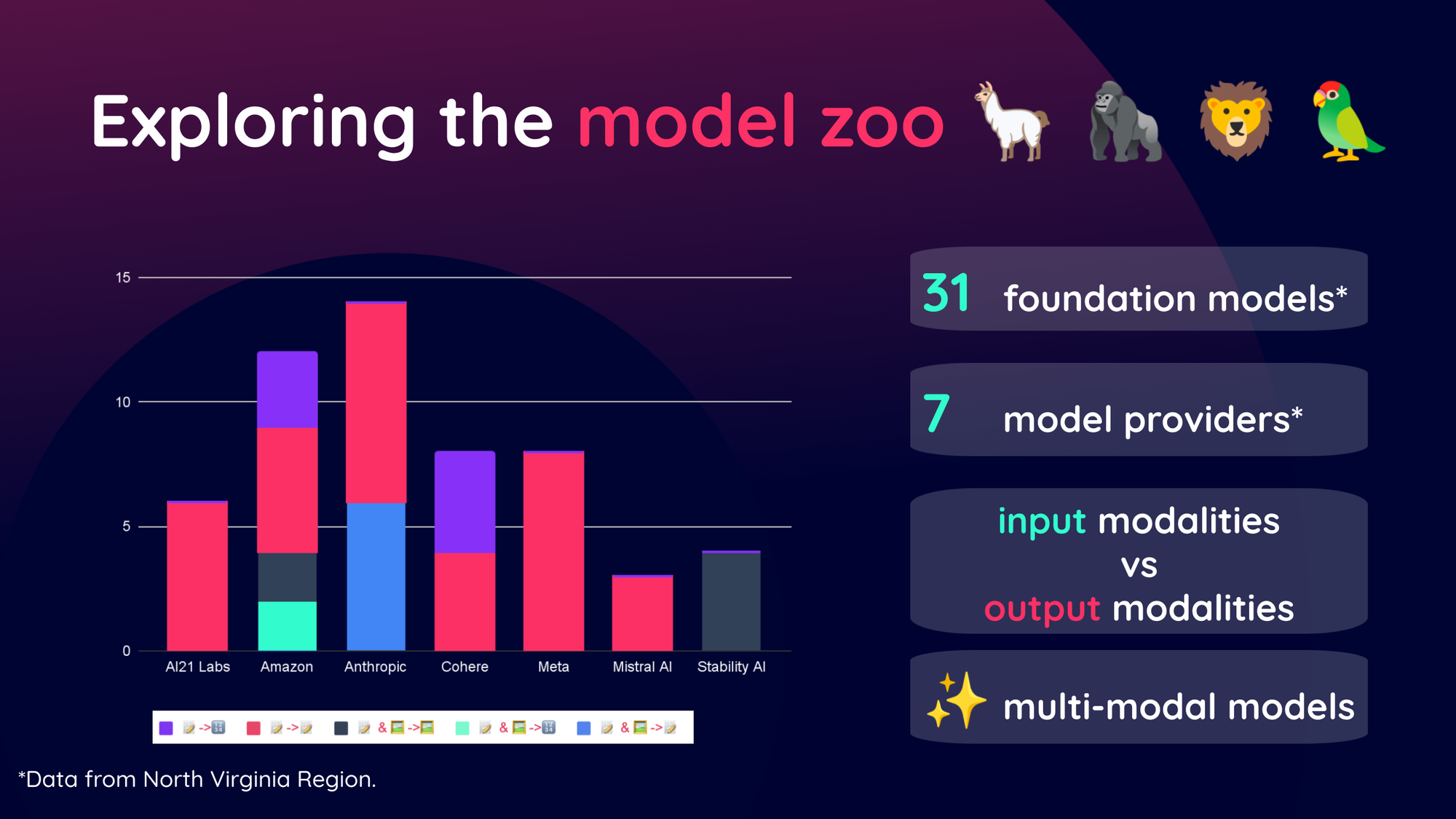
Security, Privacy, and Responsibility
Amazon Bedrock emphasizes security and privacy by design, ensuring GDPR and HIPAA compliance. Customer data is not used to train the foundation models (FM), and stringent safeguards for data encryption and abuse detection exist.
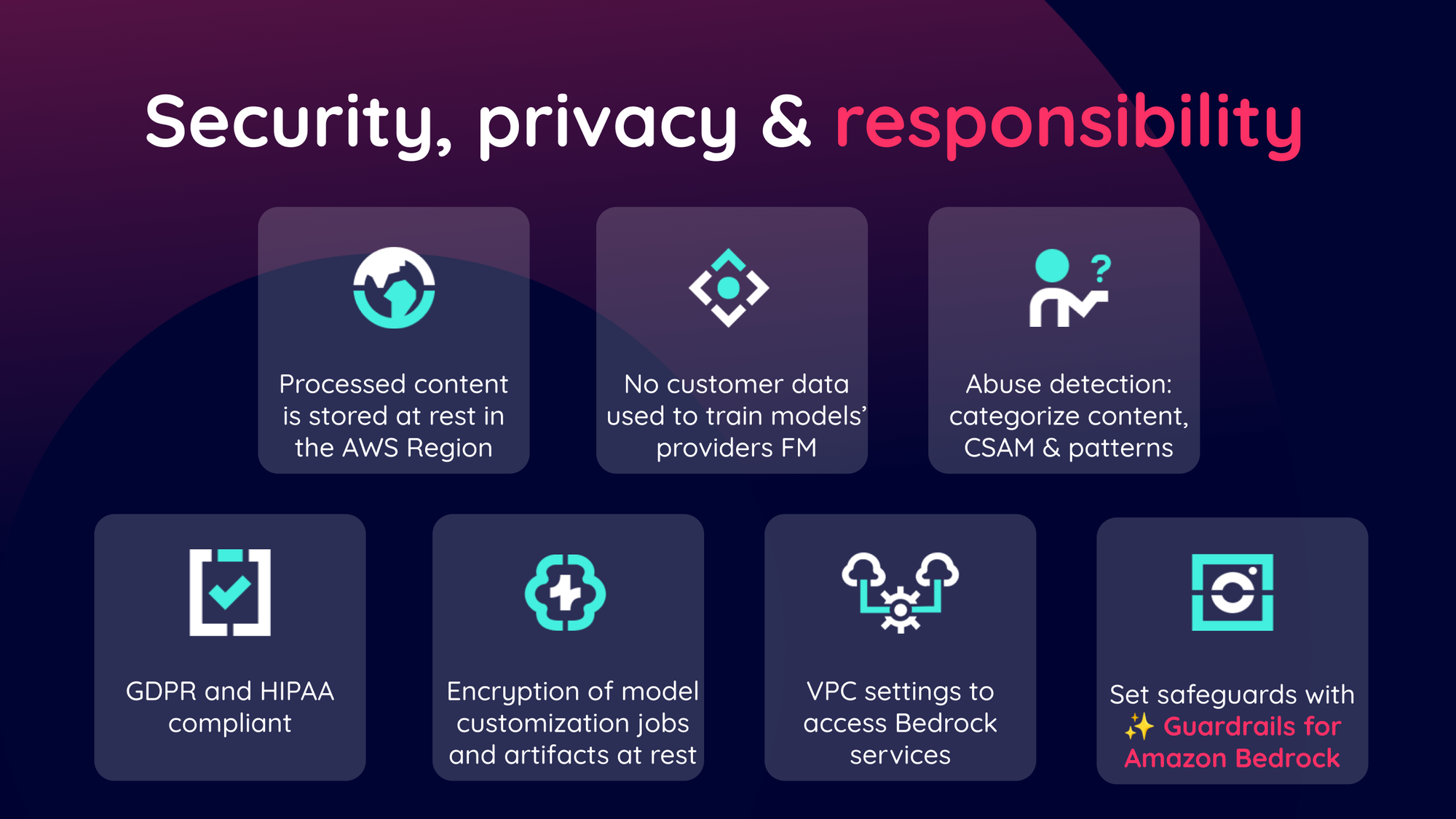
Lifecycle of a GenAI Project
The lifecycle for deploying GenAI projects involves several stages:
- Define: Identify business challenges and key performance indicators (KPIs).
- Delimit: Set proper metrics and assess the performance requirements.
- Opt: Select the suitable model balancing affordability and quality.
- Evaluate: Continuously evaluate using predefined metrics.
- Adapt: Implement strategies like prompt engineering and fine-tuning.
- Deploy: Optimize and integrate the model.
- Delimit: Ensure the system meets latency and user requirements.
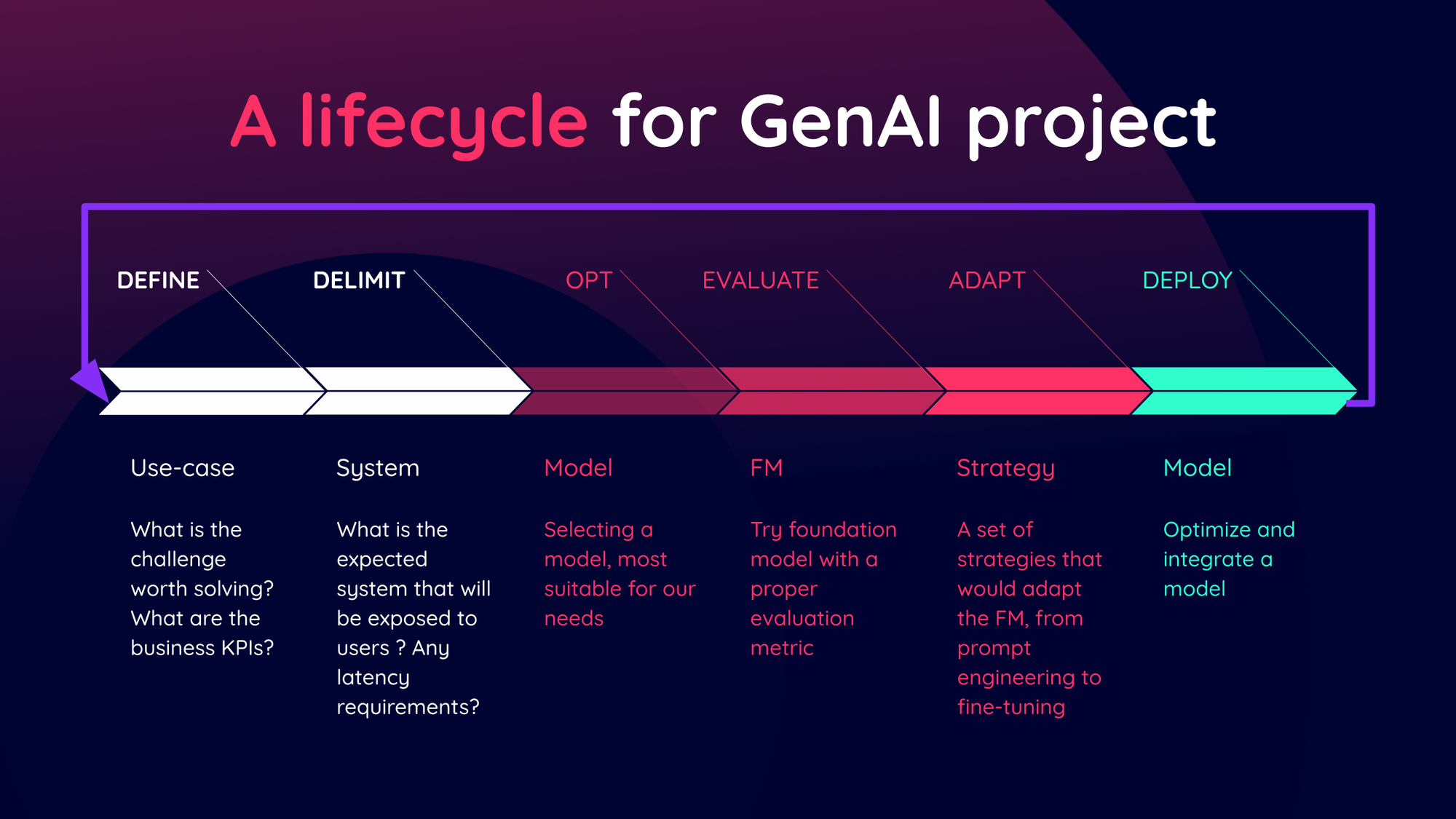
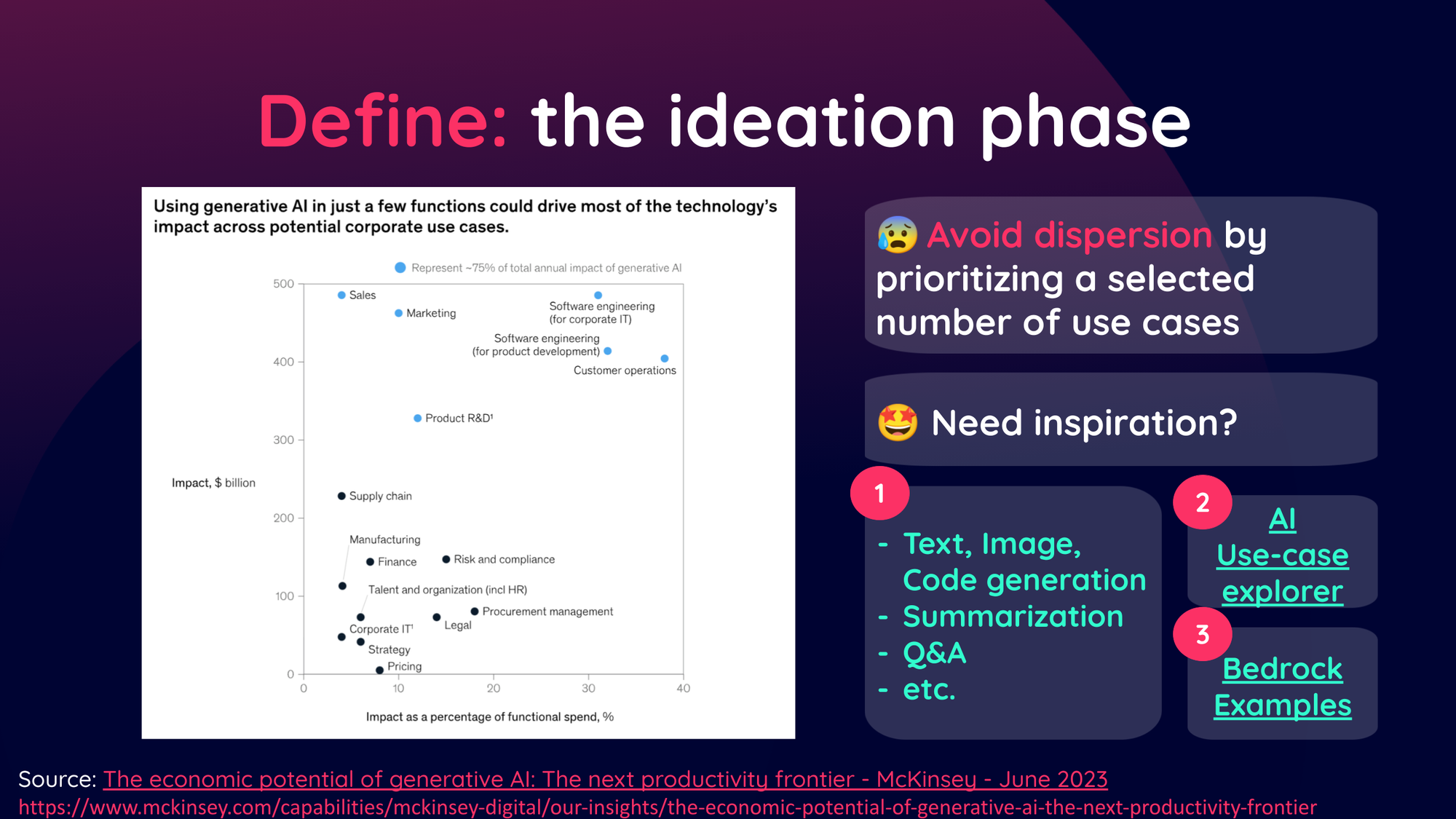
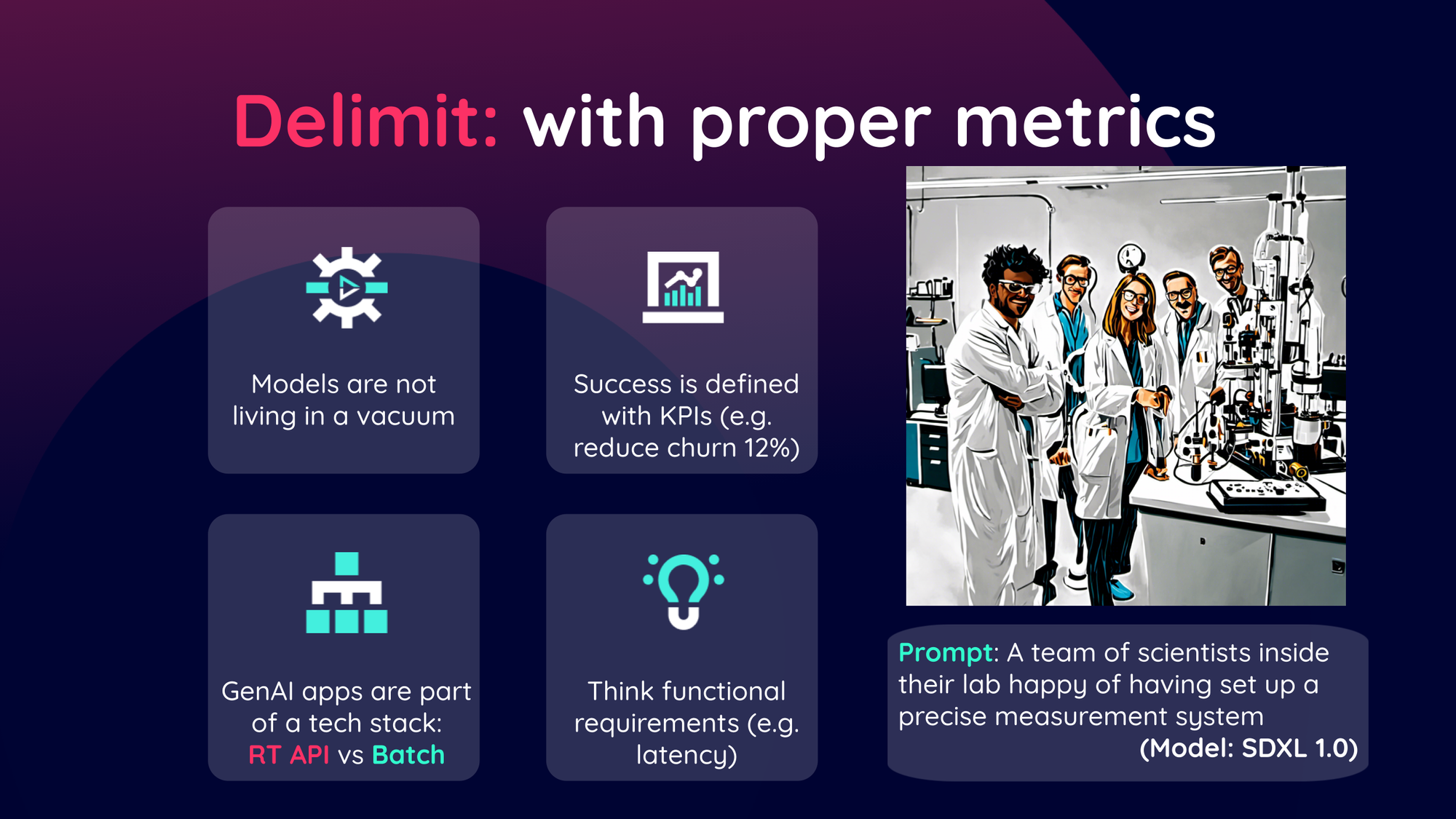
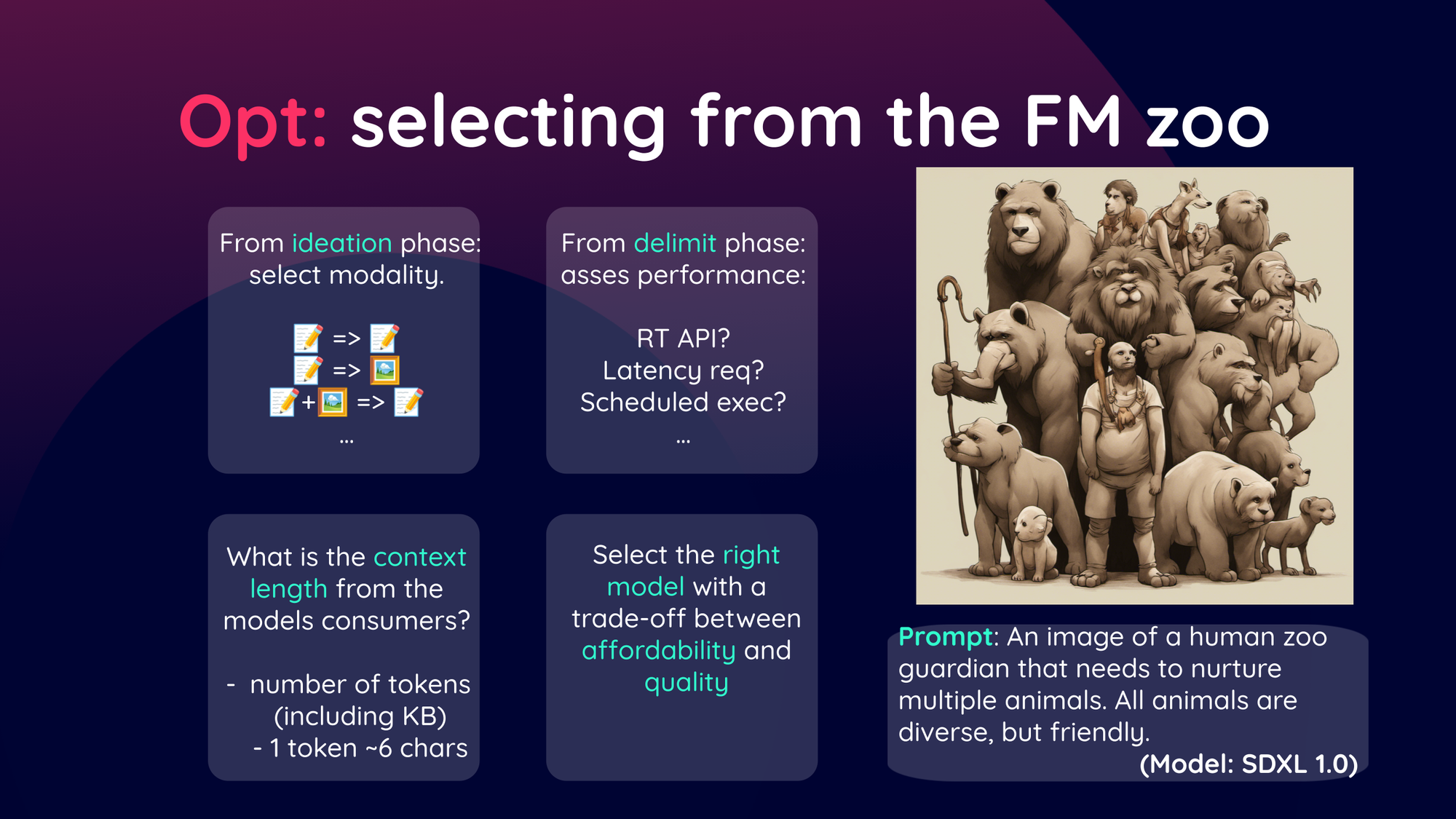
Model Affordability and Pricing
Amazon Bedrock offers flexible pricing models:
- On-Demand: Suitable for most models, charged per input/output token.
- Provisioned-Throughput: For sustained workloads, ensuring guaranteed throughput.
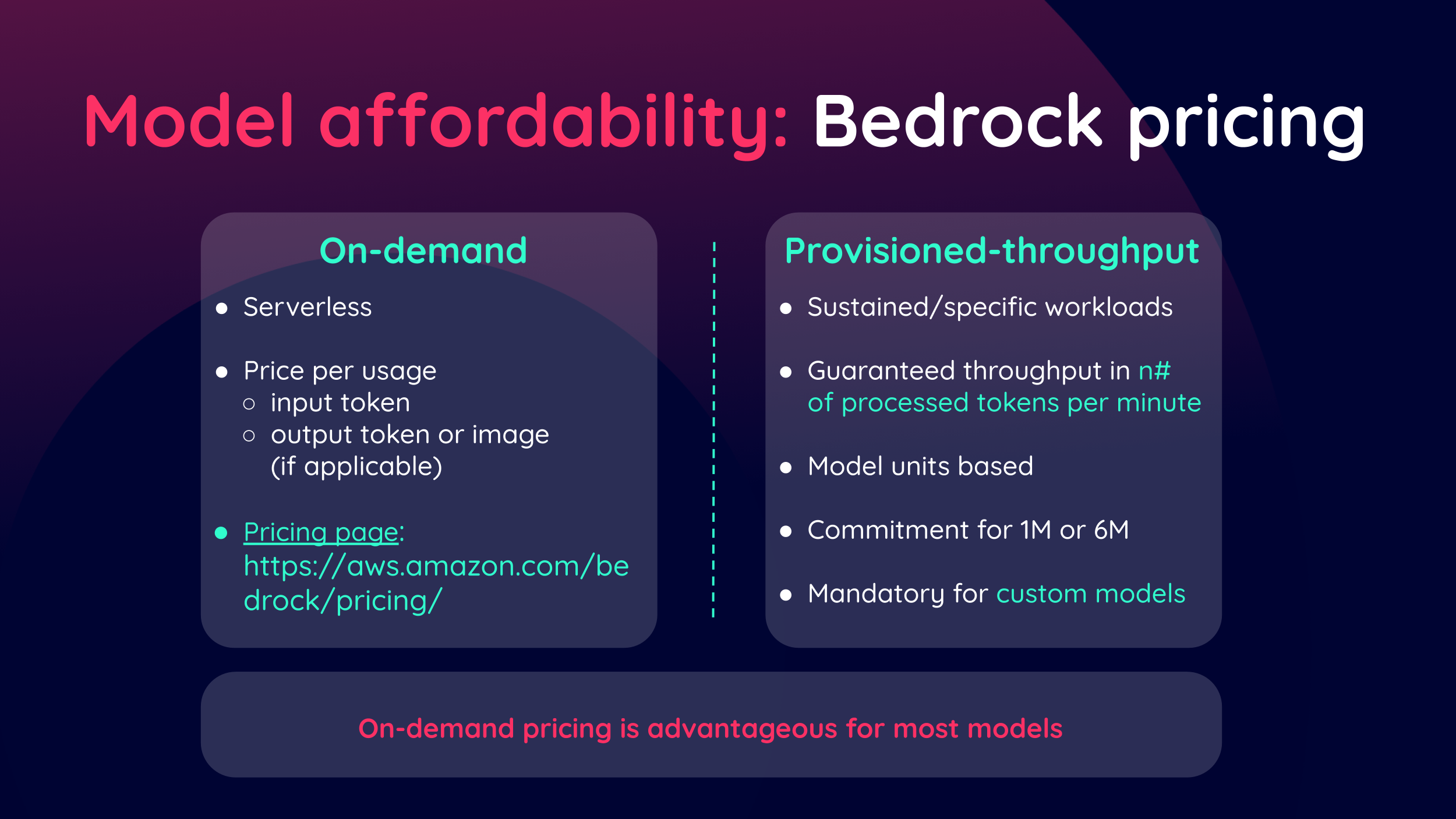
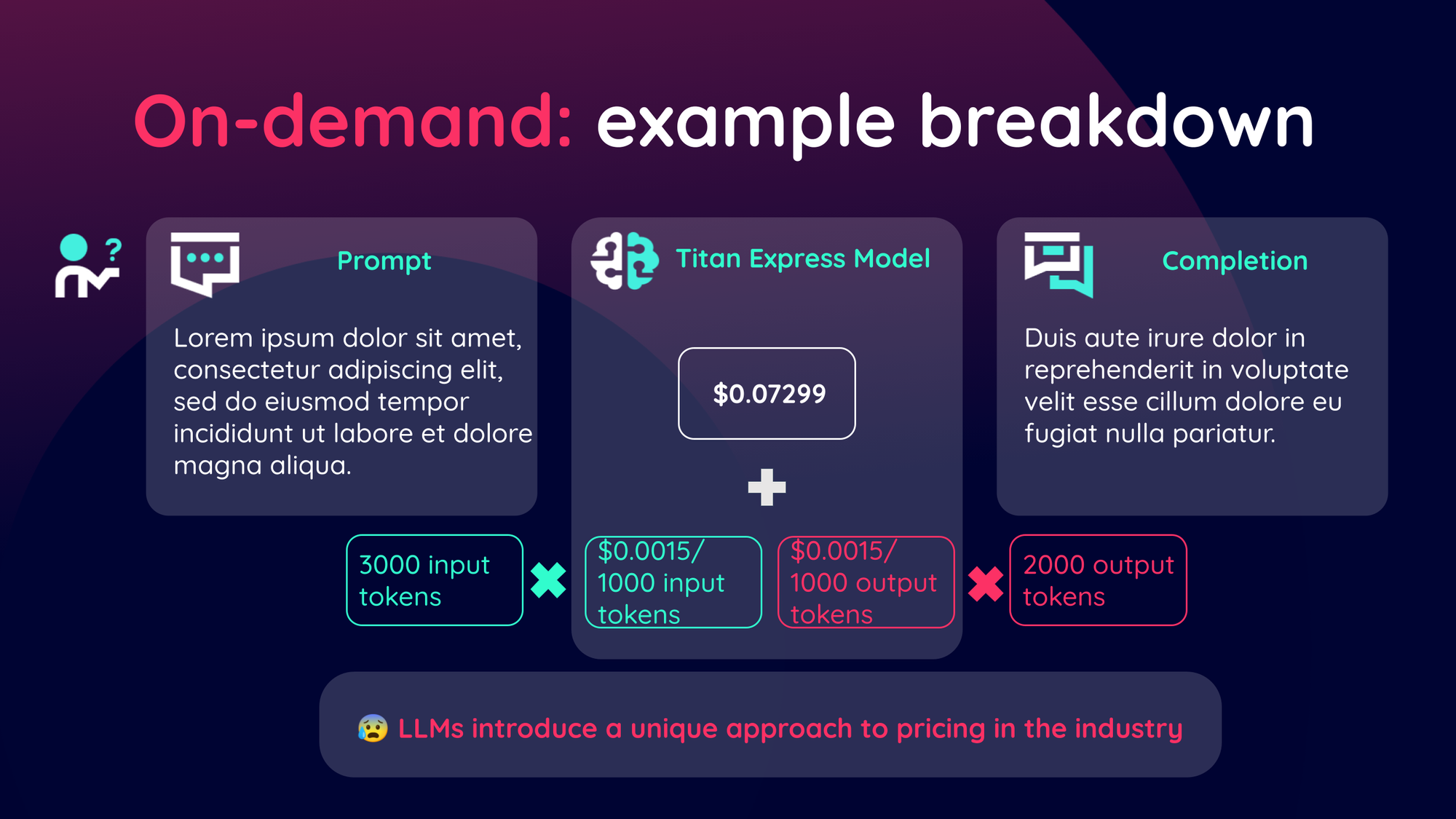
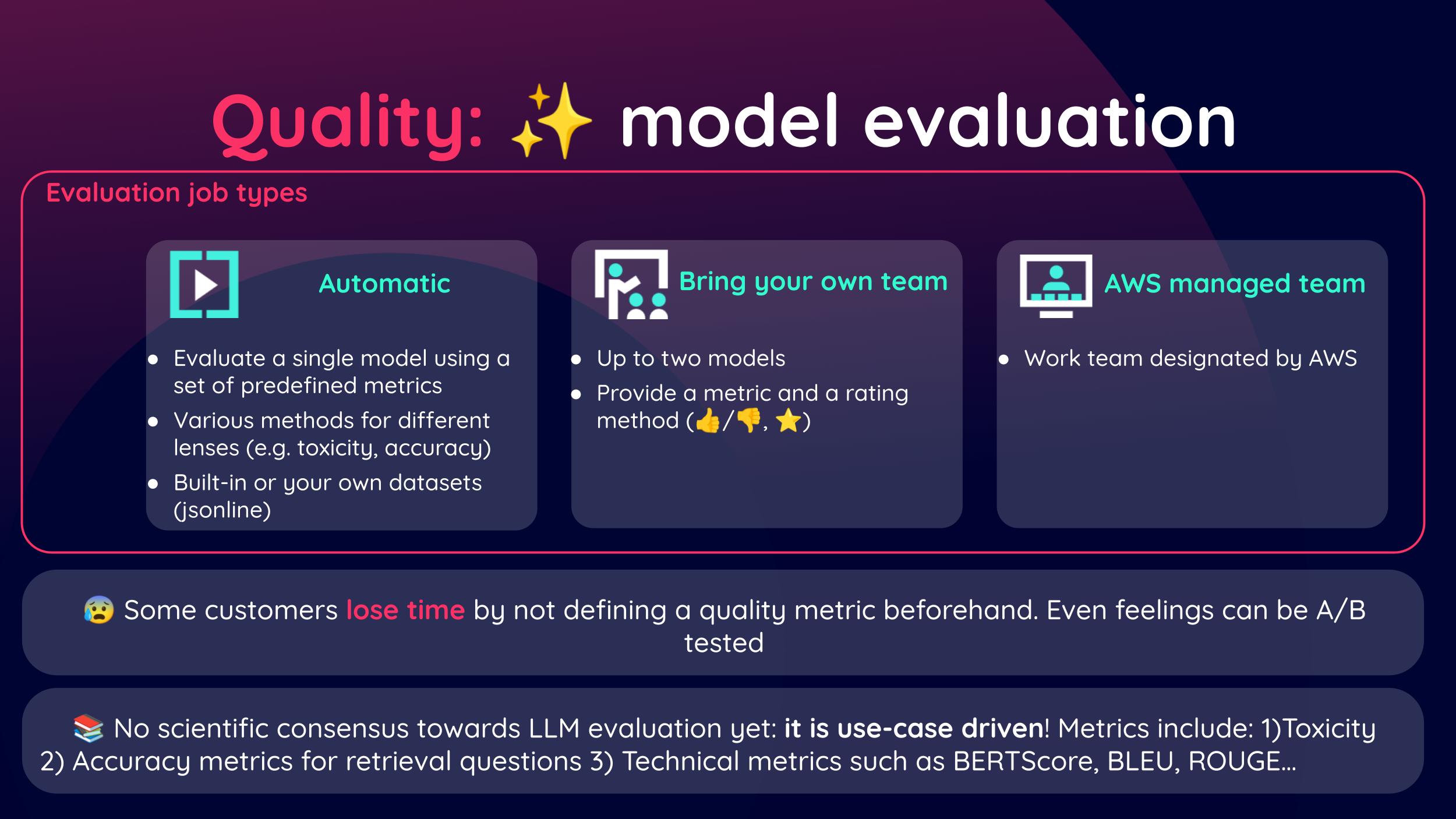
Orchestration
AWS provides tools for extending AI capabilities, such as:
- Agents for Amazon Bedrock: Build autonomous agents.
- Step Functions: Integrate with Amazon Bedrock for visual orchestration workflows.
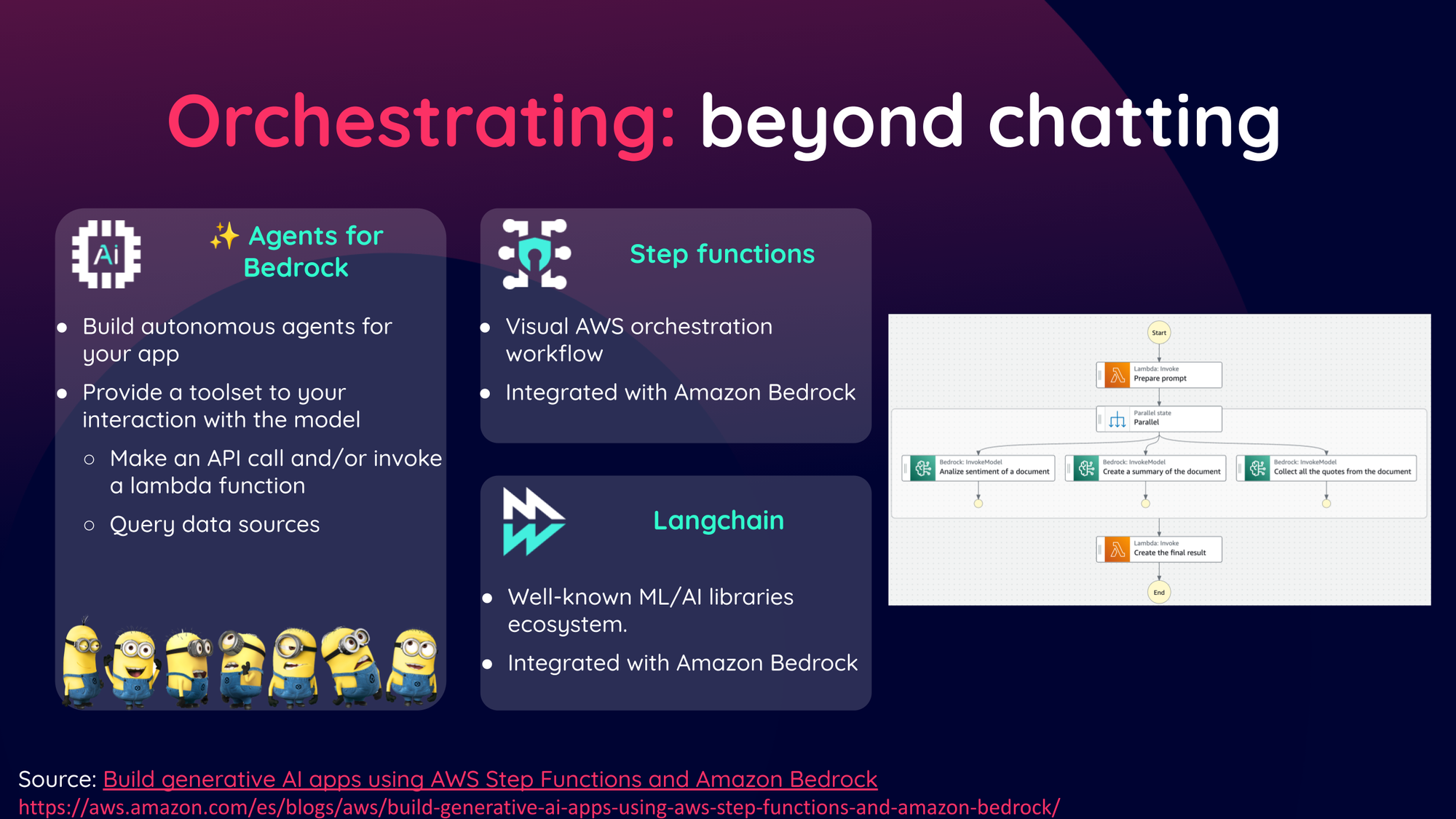
Extending the Knowledge
There are different (and complementary) options to improve the quality of the answers provided by the model. Some might be implemented easily, and others might imply the use of other services or even re-training.
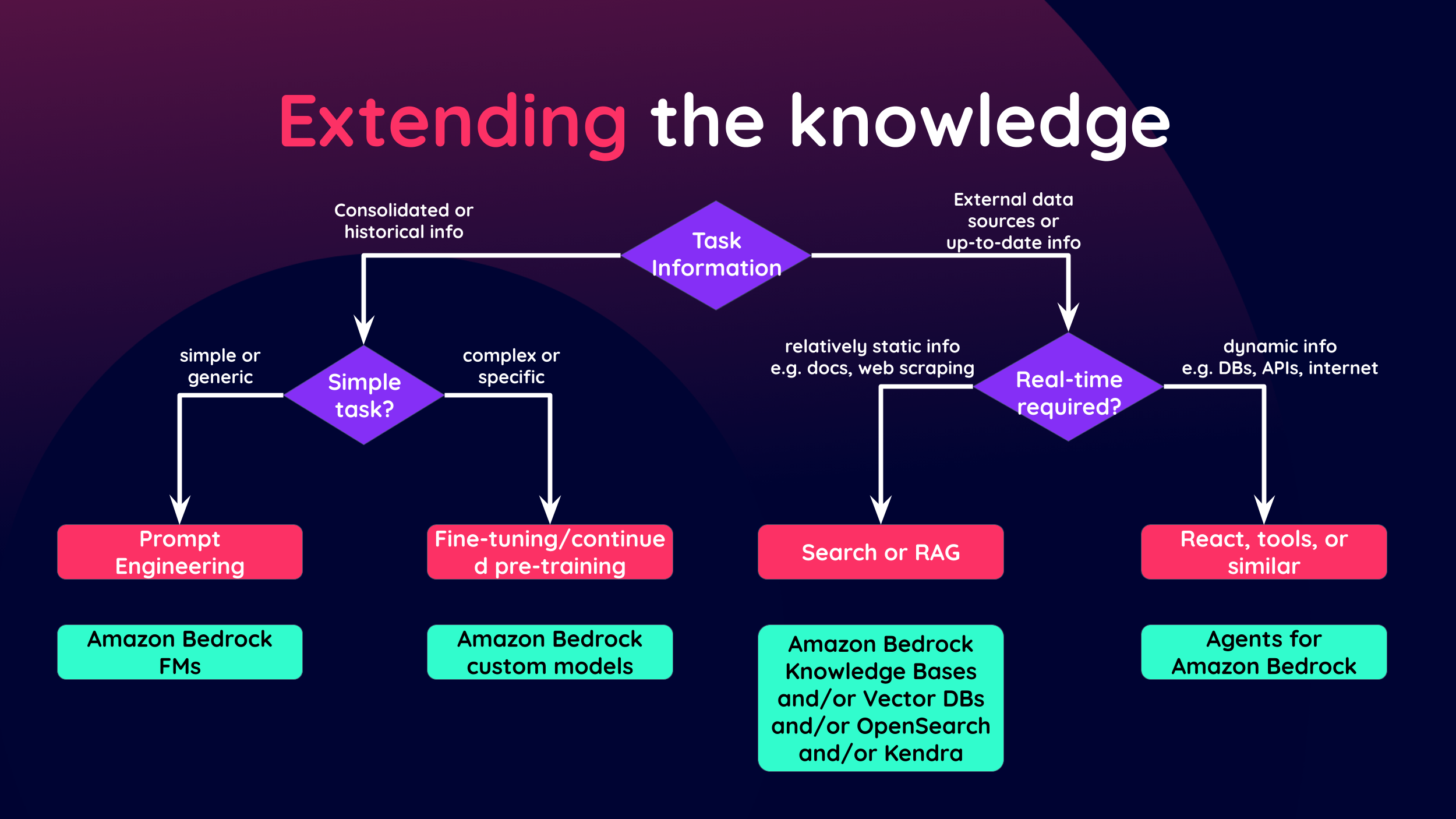
Prompt Engineering
Effective prompt engineering involves guiding an LLM to produce desired outputs by optimizing its textual input. Key techniques include:
- Chain of Thoughts (CoT): For complex reasoning.
- Instruction and Context Setting: Clear instructions, relevant context, and examples.
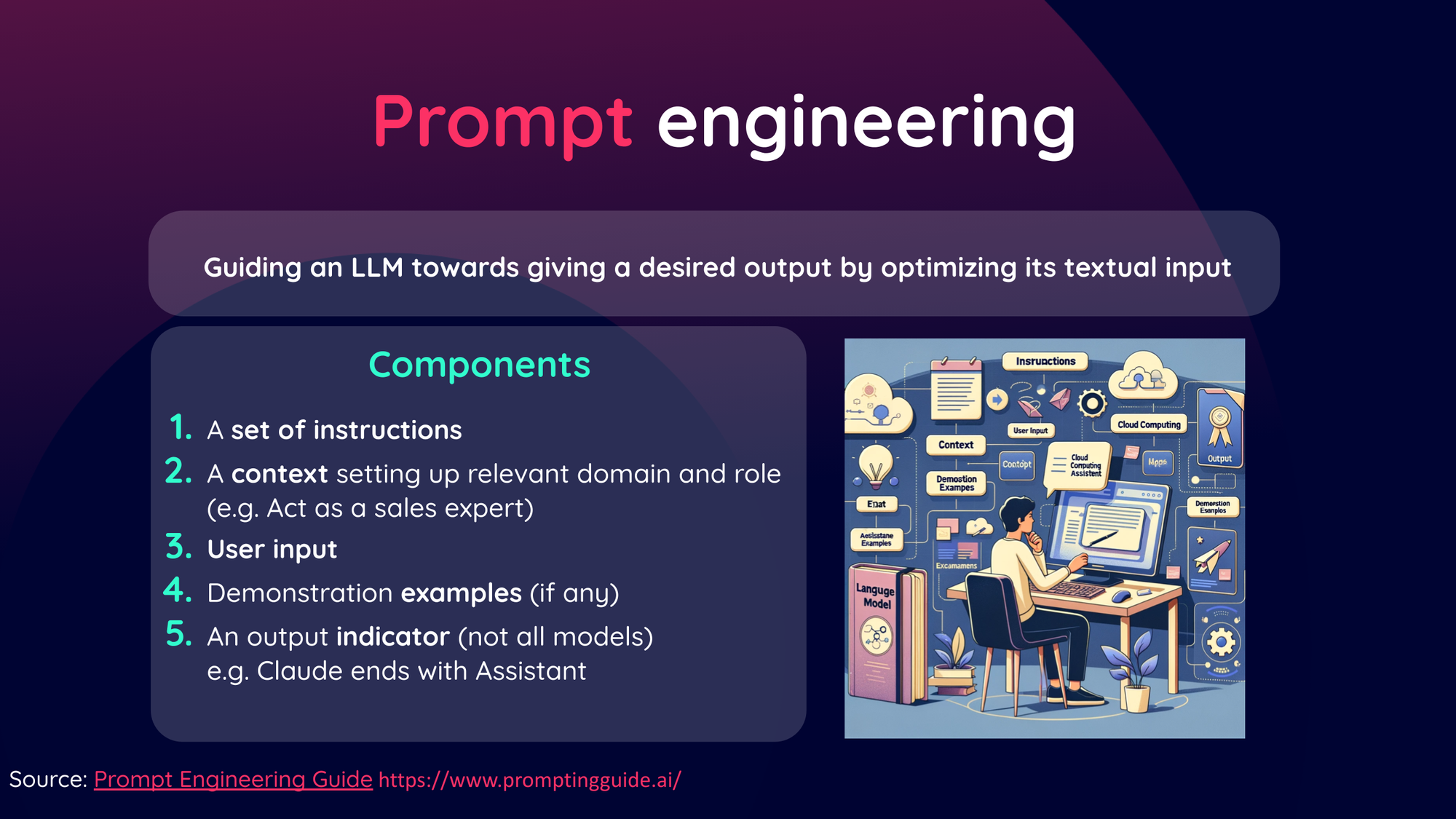
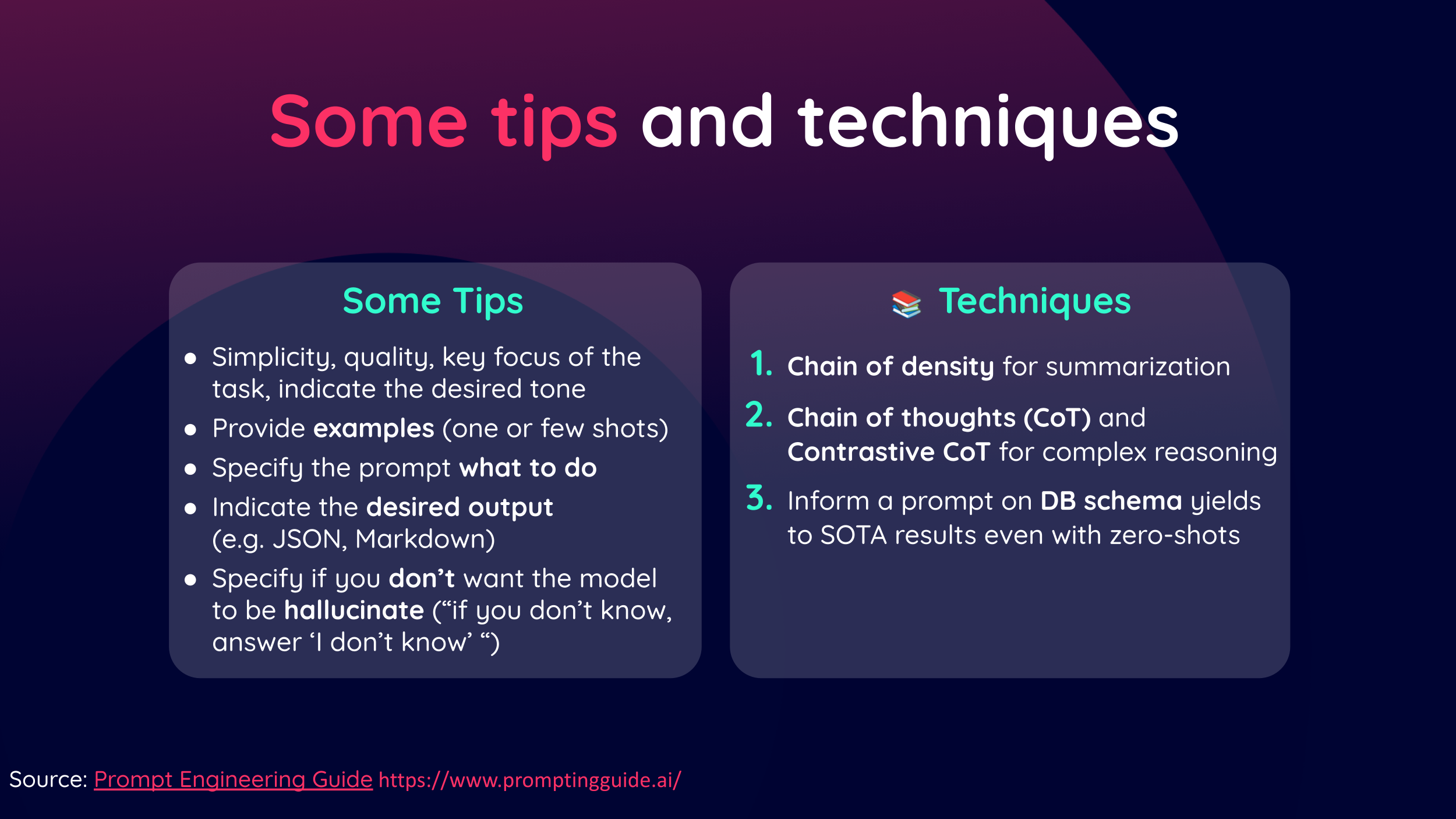
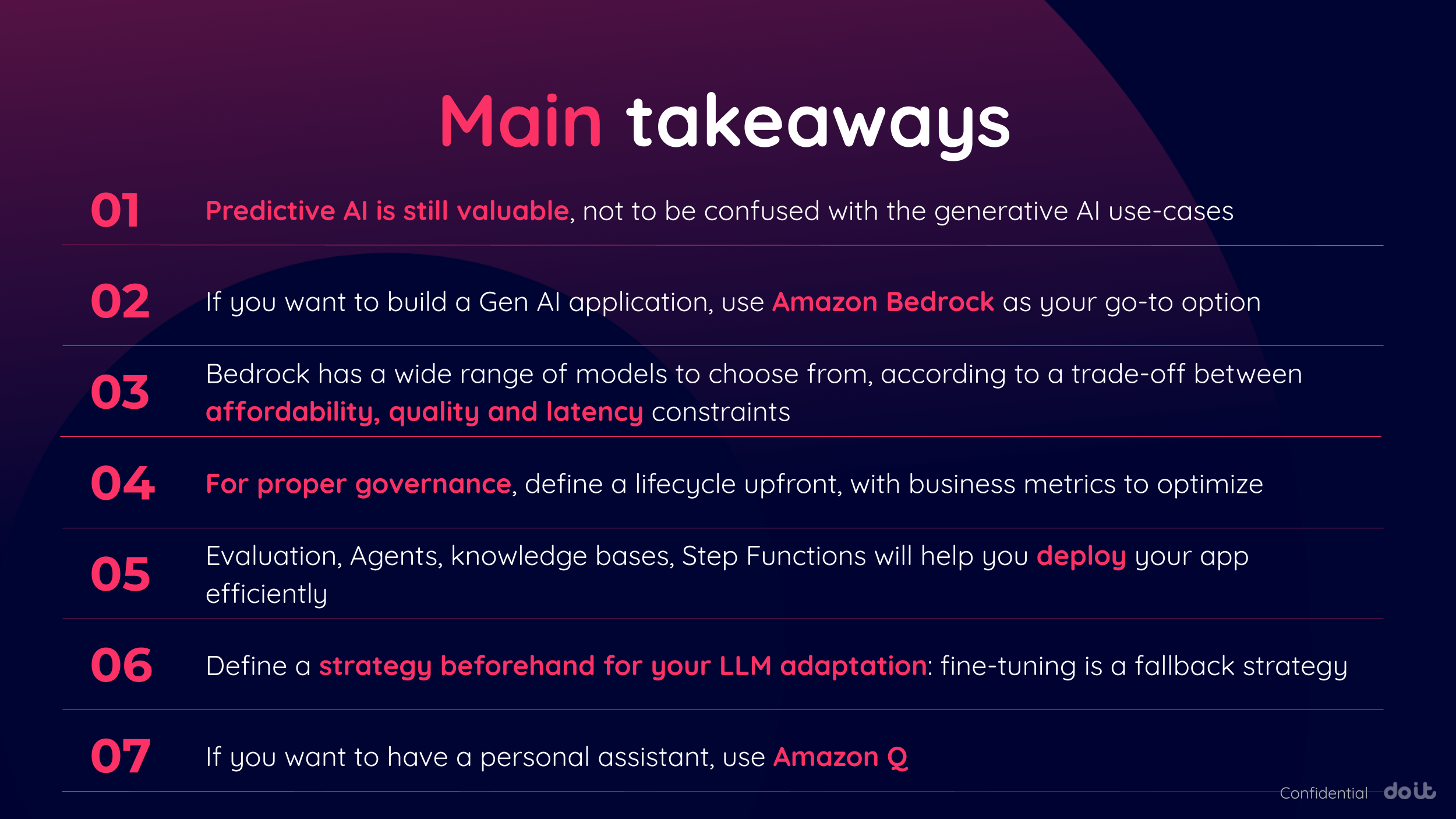
Conclusion
The AWS Gen AI Day presented by DoiT underscored that Generative AI is poised to revolutionize various industries by enhancing efficiency, reducing costs, and fostering innovation. AWS's comprehensive suite of tools and services, like Amazon Bedrock and Amazon Q, provide robust solutions to leverage GenAI securely and effectively. For businesses looking to integrate GenAI, defining a clear strategy and lifecycle is crucial for maximizing benefits and ensuring successful deployment.
By staying ahead of the curve with AWS's offerings, organizations can seamlessly transition into the era of Generative AI, driving growth and competitive advantage in their respective fields.